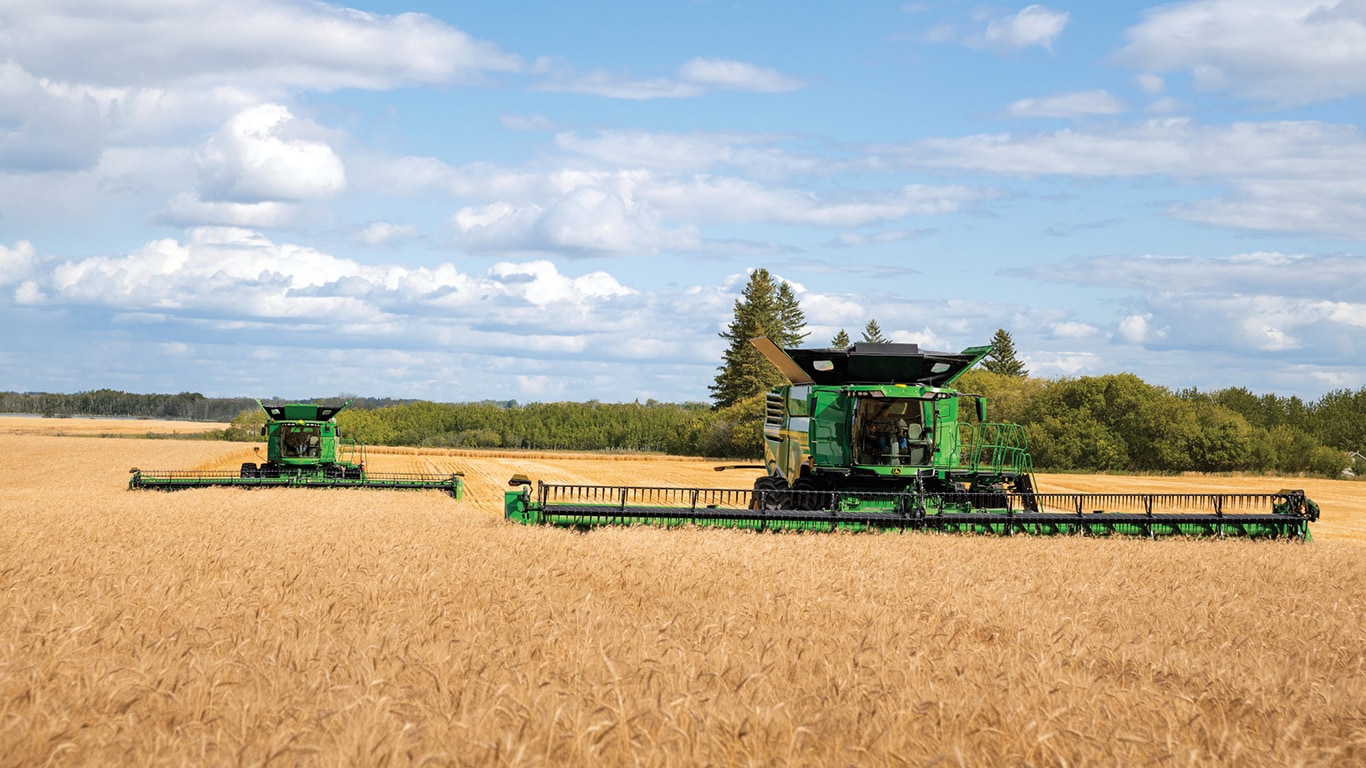Winter Wheat Harvest Dates
When winter wheat harvesting is underway across most of the United States, producers start up their combines, and then hit the fields to begin the winter wheat harvest. Winter wheat harvest dates vary across the United States, but this depends on a number of variables. Winter wheat is typically planted at the end of September through November and harvested in summer or the early autumn of the next year. In some places, winter-wheat crops fully 'complete' in a year's time, right before harvest. Winter wheat also typically yields more product than spring wheat.
What is the Winter Wheat Life Cycle?
Similar to many other crops, wheat undergoes several stages before it is ready for harvest and market sale. The winter wheat life cycle includes germination, seedling growth, tilling, stem elongation and jointing, booting, heading, flowering, milk development, dough formation, and finally ripening.
What are the Benefits of Winter Wheat?
Winter wheat offers a variety of benefits, including high yield potential, helping avoid seeding problems during wet springs, increasing profitability and efficiency of crop protection products, and helping manage herbicide resistance.
What is the Critical Period for Winter Wheat?
The critical period for winter wheat is when yield is most sensitive to biotic and abiotic stress, which occurs 20 days before to 10 days after flowering
What Are the Winter Harvest Dates?
In some states, harvesting seasons can last upwards of two months, while in other states, they last only a couple of weeks. Whether you are a wheat harvester or simply interested to learn about typical harvesting seasons on a state-by-state basis, these below dates provide all your answers:
- Alabama: May 1 - Jul 1
- Arizona: May 15 - Jul 1
- Arkansas: Jun 8 - Jul 5
- California: Jun 1 - Aug 1
- Colorado: Jun 25 - Aug 10
- Delaware: Jun 22 - Jul 17
- Florida: May 1 - Jun 15
- Georgia: May 20 - Jun 30
- Idaho: Jul 23 - Sep 14
- Illinois: Jun 22 - Jul 20
- Indiana: Jun 20 - Jul 25
- Iowa: Jun 24 - Aug 7
- Kansas: Jun 15 - Jul 25
- Kentucky: Jun 12 - Jul 10
- Louisiana: May 14 - Jun 23
- Maryland: Jun 22 - Jul 20
- Michigan: Jul 14 - Aug 4
- Minnesota: Jul 18 - Sep 5
- Mississippi: May 28 - Jul 7
- Missouri: Jun 15 - Jul 20
- Montana: Jul 28 - Sep 8
- Nebraska: Jun 26 - Aug 8
- Nevada: Jul 15 - Aug 25
- New Jersey: Jul 1 - Aug 14
- New Mexico: Jun 15 - Jul 15
- New York: Jul 15 - Aug 5
- North Carolina: May 29 - Jul 25
- North Dakota: Jul 10 - Aug 1
- Ohio: Jul 1 - Aug 4
- Oklahoma: Jun 5 - Jul 5
- Oregon: Jul 15 - Sep 1
- Pennsylvania: Jul 5 - Aug 10
- South Carolina: May 26 - Jul 1
- South Dakota: Jul 6 - Aug 12
- Tennessee: Jun 10 - Jul 10
- Texas: May 25 - Jul 7
- Utah: Jul 10 - Aug 25
- Virginia: Jun 5 - Jul 25
- Washington: Jul 15 - Sep 5
- West Virginia: Jun 25 - Aug 10
- Wisconsin: Jul 15 - Aug 20
- Wyoming: Jul 13 - Sep 3
What is the Difference Between Winter Wheat and Spring Wheat?
Spring wheat is planted during the spring season and reaped in the autumn. On the other hand, winter wheat is sown in the fall, overwinters, and is subsequently harvested during the summer months.
Does Winter Wheat Yield More than Spring Wheat?
Yes, winter wheat yields more than spring wheat because of its longer growing season.
For more information regarding agriculture equipment, contact your local John Deere dealer.
Additional Resources:

